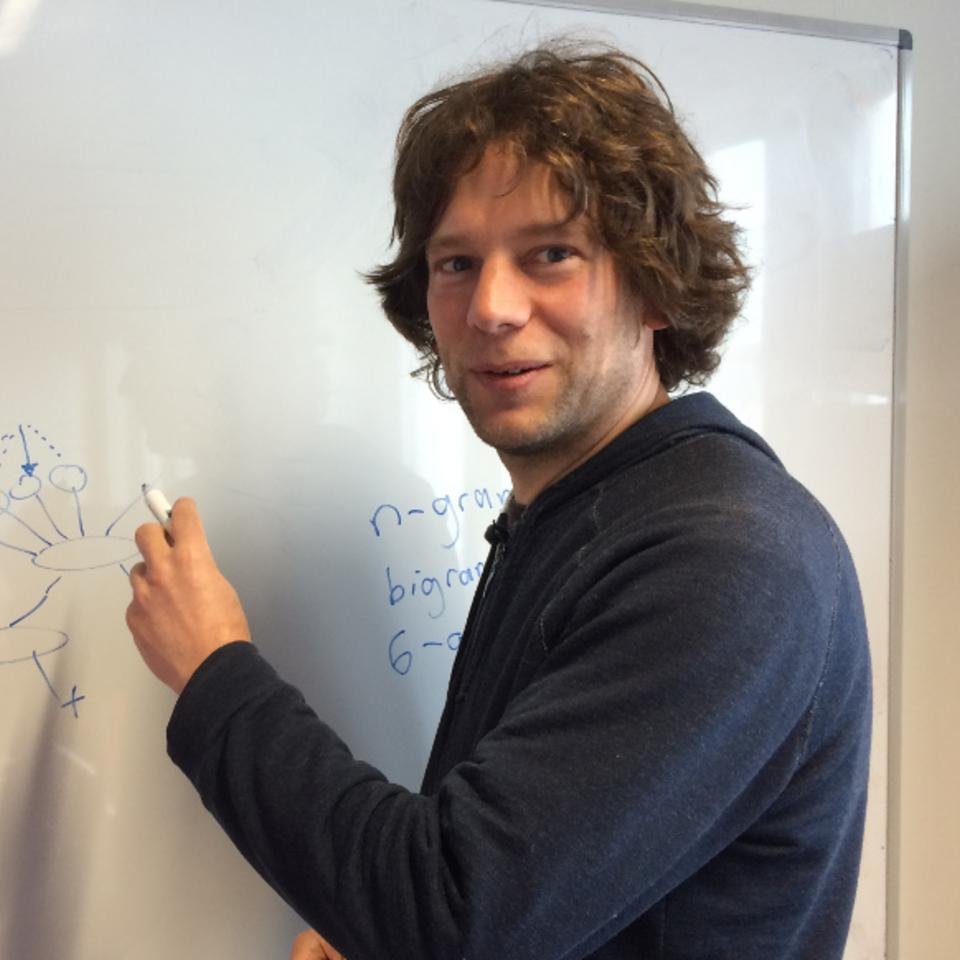Dragonfly associate Douglas Bagnall recently won a software competition to correctly predict the author of 100 or more pieces of text in each of four languages. The evaluation lab competition is run annually as part of the PAN conference, (plagiarism, authorship and social software misuse). In 2015 there were 18 entries, including some from large university research groups.
Douglas’ interest in author identification began with a curiosity about the writers of the controversial Whale Oil blog.
“When Dirty Politics came out, I wanted to find a way to identify the author of a blog post, because it was thought that various people were writing the posts anonymously on behalf of corporations and politicians. I decided to use a recurrent neural network, which works by predicting what the next character is most likely be, based on what had been written so far.”
Describing himself as an artist who writes software that makes art, Douglas first used a recurrent neural network in a video installation that was part of the Among the Machines exhibition at the Dunedin Public Art Gallery in 2013.
The human brain is the most powerful recurrent neural network, made up of a network of neurons that communicate with each other. Like the brain, artificial neural networks can improve their accuracy by being trained to recognise certain features of a medium.
“After the exhibition I had no money and no job. When I walked into Dragonfly, Edward asked me what he should use to identify kiwi calls from a recording. I said a recurrent neural network because that’s what I was doing at the time. We made it work for kiwi calls, then moved from there onto the Māori language work.” (Read about the Kōkako language recognition system).
Douglas found out about the author identification competition in March, and had two months to prepare his entry. Each entrant wrote software that was given between one and five text samples by each of hundreds of authors, and had to decide whether an unknown text had been written by the same person or not. This year the task was made trickier by using texts from different genres such as an essay and a product review.
“Some samples were only about 300 words long, so my original system wouldn’t have worked. I made a modification where a network was simultaneously learning to model all the authors at once by modelling the language as a whole and picking out bits that suited each author.”
Douglas says he will probably have another go at the competition next year. In the meantime he is presenting his work to the linguistic departments in New Zealand universities, where there is growing interest in computational linguistics.
Read a paper describing Douglas’s system: Author Identification using multi-headed Recurrent Neural Networks.
Douglas’s software Recur is openly available.
Contact Douglas by email at douglas@halo.gen.nz.


